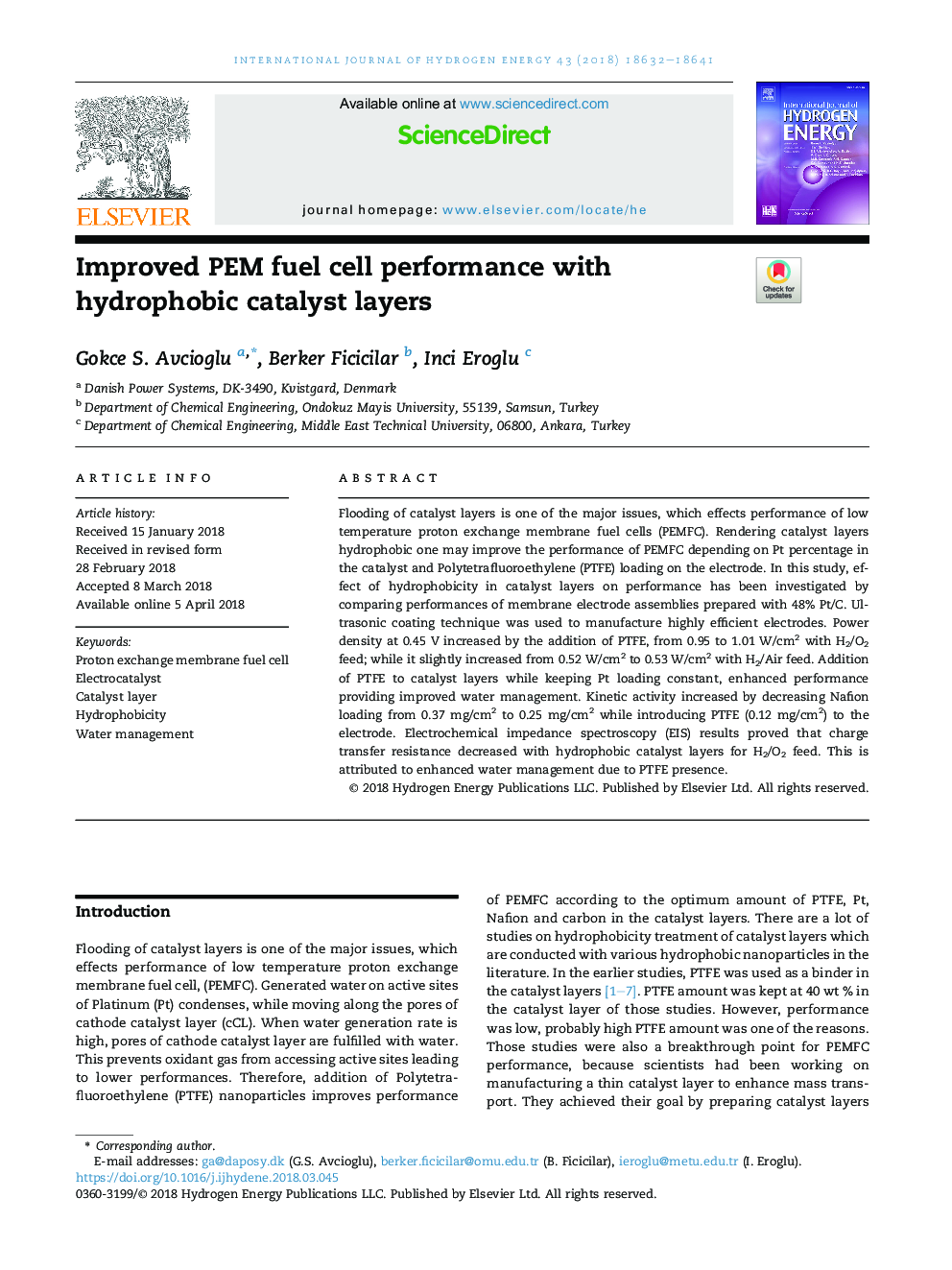| Article ID | Journal | Published Year | Pages | File Type |
|---|---|---|---|---|
| 11011600 | International Journal of Hydrogen Energy | 2018 | 10 Pages |
Abstract
Flooding of catalyst layers is one of the major issues, which effects performance of low temperature proton exchange membrane fuel cells (PEMFC). Rendering catalyst layers hydrophobic one may improve the performance of PEMFC depending on Pt percentage in the catalyst and Polytetrafluoroethylene (PTFE) loading on the electrode. In this study, effect of hydrophobicity in catalyst layers on performance has been investigated by comparing performances of membrane electrode assemblies prepared with 48% Pt/C. Ultrasonic coating technique was used to manufacture highly efficient electrodes. Power density at 0.45Â V increased by the addition of PTFE, from 0.95 to 1.01Â W/cm2 with H2/O2 feed; while it slightly increased from 0.52Â W/cm2 to 0.53Â W/cm2 with H2/Air feed. Addition of PTFE to catalyst layers while keeping Pt loading constant, enhanced performance providing improved water management. Kinetic activity increased by decreasing Nafion loading from 0.37Â mg/cm2 to 0.25Â mg/cm2 while introducing PTFE (0.12Â mg/cm2) to the electrode. Electrochemical impedance spectroscopy (EIS) results proved that charge transfer resistance decreased with hydrophobic catalyst layers for H2/O2 feed. This is attributed to enhanced water management due to PTFE presence.
Keywords
Related Topics
Physical Sciences and Engineering
Chemistry
Electrochemistry
Authors
Gokce S. Avcioglu, Berker Ficicilar, Inci Eroglu,
